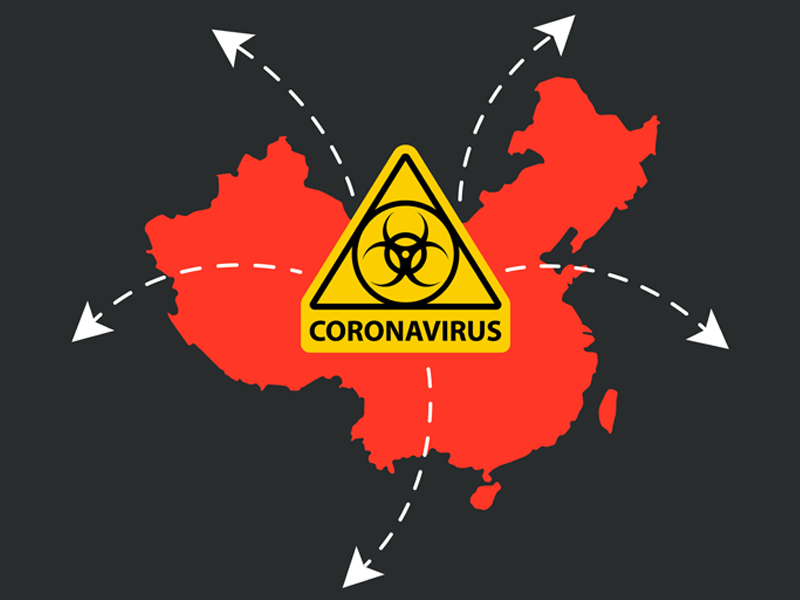Get Easy Health Digest™ in your inbox and don’t miss a thing when you subscribe today. Plus, get the free bonus report, Mother Nature’s Tips, Tricks and Remedies for Cholesterol, Blood Pressure & Blood Sugar as my way of saying welcome to the community!
How to tell if it’s a cold, flu, or the new Coronavirus

The China coronavirus is rapidly spreading with the number of people infected rising daily, and with it the death toll.
At this moment, NBC News reports that the number of confirmed cases in China has reached almost 10,000, with another 102,000 people reported to be under observation.
The World Health Organization (the WHO) has declared the epidemic a “global emergency” with 23 countries so far confirming cases of Coronavirus.
Of course, those numbers could change rapidly over a few days or even hours.
And yes…
The United States is on that list with 11 cases so far confirmed including a case of person-to-person transmission that raises the threat level of the virus.
So, is it any surprise that more and more people are beginning to wonder… Is that tickle in my throat, the cough that just started, or the fever that hit Coronavirus, or do I just have the common cold or flu?
That’s why we’re breaking down information from the experts on how to tell the difference and when you should be worried about the new virus out of China.
The symptoms
The biggest problem with determining whether you have a cold, flu, or Coronavirus is that they are all upper respiratory infections. This means that their symptoms are extremely similar.
“Every respiratory virus is the same — you get a runny nose, a stuffy nose, a cough, sometimes a sore throat, all because the lining of your nose and throat are damaged. The symptoms are caused by that virus or bacteria damaging the cells of your respiratory tract. It doesn’t matter what virus is causing it,” says Allison McGeer, an infectious disease specialist at Mount Sinai Hospital in Toronto.
However, according to the medical team at Yale, you can generally differentiate between a cold and the flu in this way…
“Flu symptoms are more intense than those associated with a cold and usually come on suddenly, including a fever higher than 100.5 degrees, extreme exhaustion, severe muscle or body aches, a dry cough and chills.”
But, here’s where it gets tricky.
UPDATE: Why is the coronavirus so hard to contain
The Yale doctors say that Coronaviruses generally mimic a cold and flu when they first start out but often progress to a much more severe respiratory problem such as pneumonia.
So, how do you know which it is?
“If you don’t have a fever of 100 degrees Fahrenheit or higher that lasts for three to five days, you likely just have the common cold.”
But, according to the CDC, if your symptoms progress to shortness of breath, body aches and chills you could be infected with one of the more dangerous types of the coronavirus.
Beyond that, at this time, you should look at your risk factors and see a doctor whether you think the flu or Coronavirus is behind your symptoms. That’s because Influenza is nothing to scoff at. As of mid-January, we’ve seen 6,600 deaths in the U.S. from flu.
Your risks
If you’ve been around someone who has recently returned from China, Coronavirus could be behind your symptoms. And, of course, like with every virus, including flu and cold, you’re far more likely to be struck by Coronavirus if you’re older, living with other medical issues, or have a weakened immune system.
According to Dr. Nancy Messonnier of the CDC’s Center for Immunization and Respiratory Diseases, at this time, there have not been cases of Coronavirus spread outside of these groups.
Related: What your risk of getting seriously sick with coronavirus actually looks like
Of course, that’s not to say there won’t be in the coming days, simply that there hasn’t been yet.
Bottomline: When in doubt, don’t mess around. See a doctor.
Protecting yourself from Coronavirus
In the meantime, it’s vital to take steps to protect yourself from this latest viral outbreak by boosting your immune system so it’s ready to fight if and when it becomes necessary and using basic hygiene precautions.
Things like washing your hands regularly throughout the day, wearing a mask in crowds, and disinfecting items that are touched regularly, like light switches and doorknobs can help limit the spread of all types of viruses, including flu, colds, and Coronavirus.
And, be sure to check out the post by my colleague, Margaret Cantwell, where she delves into 13 natural supplements and drinks that have been shown to help your immune system fight off viruses.
Hopefully, the next few weeks will see the spread of the virus die down thanks to containment and quarantine efforts across the globe. But, it just makes good sense to prepare, get your immune system in good shape, and practice disinfection measures, in order to protect yourself and your family in the meantime.
Sources:
- Coronavirus spreads to more countries: All the latest updates — Al Jazeera
- Coronavirus updates: The latest news on the outbreak and the global response — NBC News
- China admits “shortcomings” as global efforts to stop deadly coronavirus ramp up — CBS News
- The US has confirmed 11 cases of the coronavirus across 5 states. Here’s what we know about all the US patients — Business Insider
- Influenza (Flu) vs. Coronaviruses — Yale New Haven Health
- Coronavirus: I’m sick. Is it a cold, flu or the new virus? — The Mercury News
- How the coronavirus is different to the flu — news.com.au
- Coronavirus or common cold? How to tell the difference — WRIC News













